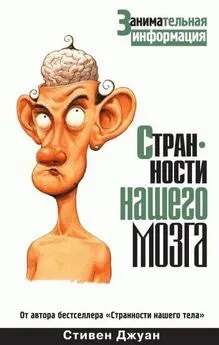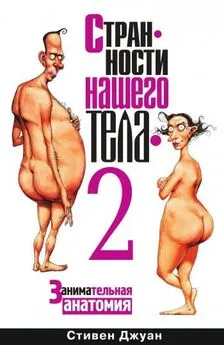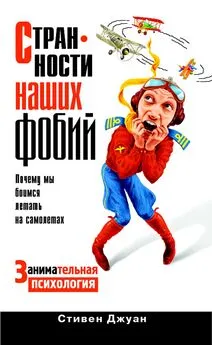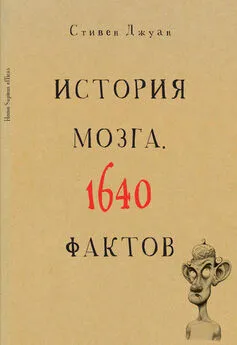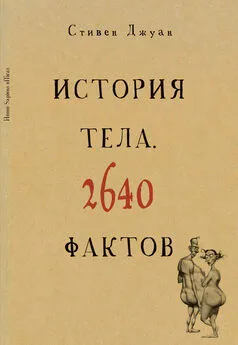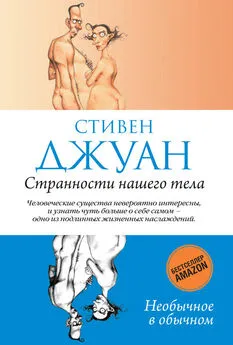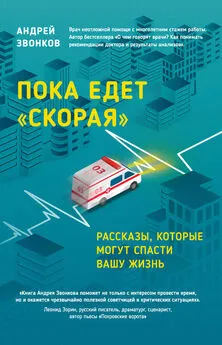Стивен Джуан - Могут ли поцелуи продлить жизнь?
- Название:Могут ли поцелуи продлить жизнь?
- Автор:
- Жанр:
- Издательство:Литагент «РИПОЛ»15e304c3-8310-102d-9ab1-2309c0a91052
- Год:2011
- Город:Москва
- ISBN:978-5-386-02692-9
- Рейтинг:
- Избранное:Добавить в избранное
-
Отзывы:
-
Ваша оценка:
Стивен Джуан - Могут ли поцелуи продлить жизнь? краткое содержание
Доктор Стивен Джуан – ученый-антрополог, автор мировых бестселлеров «Странности нашего тела» и «Странности нашего мозга». Родился и вырос в США, сейчас живет в Австралии, где преподает в университете и выступает на радио и телевидении. В новой книге доктор Джуан продолжает искать объяснение самым странным странностям нашей жизни.
Можно ли доверять детектору лжи?
Почему беременных тошнит по утрам?
Почему одних людей комары кусают чаще других?
Можно ли клонировать неандертальца?
Можно ли определить характер человека по его ушам?
Ответы на эти и другие вопросы вы найдете в этой книге.
Могут ли поцелуи продлить жизнь? - читать онлайн бесплатно ознакомительный отрывок
Интервал:
Закладка:
466
S. Juan, ‘How much damage does a tapeworm do to the human body?’, The Register, 27 January 2007.
467
S. Juan, ‘How much damage does a tapeworm do to the human body?’, The Register, 27 January 2007.
468
Drs G. Koren and C. Maltepe are from the Hospital for Sick Children in Toronto, Canada.
469
G. Koren and C. Maltepe, ‘Preventing recurrence of severe morning sickness’, Canadian Family Physician, 2006, vol. 52, no. 12, pp. 1545–1546.
470
Drs C. Louik, S. Hernandez-Diaz, M. Werler and A. Mitchell are from the Slone Epidemiology Centre at Boston University.
471
C. Louik et al., ‘Nausea and vomiting in pregnancy: Maternal characteristics and risk factors’, Paediatric and Perinatal Epidemiology, 2006, vol. 20, no. 4, pp. 270–278.
472
L. Farina, I. JefFcoate and R. Lucas, ‘Dodgy tummy’, New Science, 6 January 2007, p. 57.
473
J. Varasdi, Myth Information, 1996, pp. 210–211.
474
Drs I. Ahmed, D. Deakin and S.L. Parsons are from the Department of General Surgery at the Queen’s Medical Centre in Nottingham, UK.
475
I. Ahmed et al., Appendix mass: Do we know how to treat it?’, Annals of the Royal College of Surgeons of England, 2005, vol. 87, no. 3, pp. 191–195.
476
S. Juan, ‘Do we still remove the appendix as often as we used to?’, The Register, 26 May 2006.
477
Timothy L. Taylor is a science writer from Vancouver, Canada.
478
T. Taylor, The Prehistory of Sex: Four Million Years of Human Culture, Bantam, New York, 1996.
479
S. Juan, ‘What lies within’, The Register, 9 June 2006.
480
S. Juan, ‘Why seeing is not always believing’, National Post, 28 September 2006, pp. 1–2.
481
S.Juan, ‘How long does it take the body to…?’, Epoch Times, 19 May 2006, p. 8.
482
S. Juan, ‘Ready, steady, grow’, The Register, 26 May 2006.
483
Dr K. Nakamura is a chemist and Dr Mitsuo Hiramatsu is a photobiologist at the Electron Tube Division of the Central Research Laboratory at Hamamatsu Photonics in Hamamatsu, Japan.
484
K. Nakamura and M. Hiramatsu, ‘Ultra-weak photon emission from human hand: Influence of temperature and oxygen concentration on emission’, Journal of Photochemistry and Photobiology B: Biology, 2005, vol. 80, no. 2, pp. 156–160.
485
Drs M.P. Guedj and A. Lev are from the University Hospital of Hadassah in Israel.
486
M. Guedj and A. Lev, ‘Situs inversus: Leave well alone”, Annales Francaises d’Anesthesie et de Reanimation, 2007, vol. 26, no. 3, pp. 265–266.
487
Goddard Space Flight Centre, Ask an Astronaut, National Aeronautics and Space Administration, Houston, 12 February 2007.
488
Dr Samuel Conway is from Avid Therapeutics in Philadelphia.
489
Personal communication, 8 February 2007.
490
R. Marsden and C. Robertson, ‘Major Toms’, New Scientist, 31 August 1996, p. 65.
491
Drs Richard Jennings and Ellen Baker are from the University of Texas Medical Branch in Galveston.
492
R. Jennings and E. Baker, ‘Gynecological and reproductive issues for women in space: A review’, Obstetrical & Gynecological Survey , 2000, vol. 55, no. 2, pp. 109–116.
493
J. Jones, R. Jennings, R. Pietryzk, N. Ciftcioglu and P. Stepaniak, ‘Genitourinary issues during spacefl ight: A review’, international Journal of Impotence Research, 2005, vol. 17 (Suppl. 1), pp. S64—S67.
494
S. Juan, ‘What issues are there for women in space?’, The Register, 28 July 2006.
495
G. Mirkin, Catch a Cold, DrMirkin.com, 13 November 2006.
496
Dr Terry Bolin is a gastroenterologist at the Gut Foundation Institute at the Prince of Wales Hospital and the University of New South Wales in Sydney.
497
Personal communication, 12 November 2006.
498
Dr Andrew Lloyd is from the School of Medicine at the University of Newcastle in New South Wales.
499
M. Ham, ‘But my mum said…’, Sydney Morning Herald, 19 January 2006, ‘Health & Science’, pp. 4—.
500
Dr Richard Fedorak is from the University of Alberta Hospital in Edmonton, Canada.
501
Personal communication, 3 January 2007.
502
Dr Roshini Rajapaksa is from the New York University School of Medicine.
503
Personal communication, 3 January 2007.
504
J. Richfi eld, ‘No swimming’, New Scientist, 12 January 2007, p. 57.
505
Drs A. K. Myhre, K. Berntzen and D. Bratlid are from the Department of Laboratory Medicine, Children’s and Women’s Health at the Norwegian University of Science and Technology in Trondheim.
506
A. Myhre et al., ‘Genital anatomy in non-abused preschool girls’, Acta Paediatrica, 2003, vol. 92, no. 12, pp. 1453–1462.
507
S. Juan, ‘What is the use of the hymen?’, The Register, 11 August 2006.
508
M. Foster, ‘The boob-onic plague’, Weekly World News, 26 August 2002, pp. 42–43.
509
K. Campbell and M. Lakie, Aaaaaah?’, New Scientist, 15 March 1997, p. 65.
510
S. Juan, A blow for babe magnets’, National Post, 17 April 2006, p. 1.
511
Dr Michael Onken is from the Department of Anatomy at Washington University in St Louis.
512
Personal communication, 30 March 2006.
513
S.Juan, A blow for babe magnets’, National Post, 17 April 2006, p. 1.
514
Stephen Turner is an engineer with the American Society of Heating, Refrigerating and Air-Conditioning Engineers (ASHRAE) in Atlanta, Georgia.
515
Personal communication, 23 August 2006.
516
Personal communication, 24 August 2006.
517
S. Juan, ‘Why do some people feel the cold more than others?’, The Register, 8 September 2006.
518
S. Juan, ‘Great moments in human research’, The Register, 27 January 2007.
519
S. Juan, ‘Great moments in human research’, The Register, 3 February 2007.
520
Drs J. M. Draus, S. Huss, N. Harty, W. Cheadle and G. Larson are from the Department of Surgery at the School of Medicine at the University of Louisville, Kentucky.
521
J. Draus et al., ‘Enterocutaneous fistula: Are treatments improving?’, Surgery, 2006, vol. 140, no. 4, pp. 570–578.
522
S. Juan, “What is a fi stula?’, The Register, 27 October 2006.
523
S. Juan, ‘Does alcohol really keep you warm’, The Register, 27 October 2006.
524
Dr Gerhard Gmel is from the Alcohol Treatment Centre at Lausanne University Hospital, Switzerland, and Dr Jurgen Rehm is from the Department of Public Health Sciences at the University of Toronto, Canada.
525
G. Gmel and J. Rehm, ‘Harmful alcohol use’, Alcohol Research and Health, 2003, vol. 27, no. 1, pp. 52–62.
526
S. Juan, ‘Three orders of the mind’, Epoch Times, 20 December 2006, p. 9.
527
R. Campbell, Campbell’s Psychiatric Dictionary, Oxford University Press, New York, 2004, pp. 538–539, 541.
528
S. Juan, ‘Keeping your psychos straight’, National Post, 15 May 2006, pp. 1–2.
529
Dr John Gartner is a clinical psychologist at Johns Hopkins University School of Medicine.
530
J. Gartner, ‘Dark Minds’, Psychology Today, September-October 2009, pp. 37–38.
531
Dr Patrick Leman is from the Royal Holloway College of the University of London.
532
British Psychological Society, Who shot the president? London, 18 March 2003.
533
P. Leman, ‘The born conspiracy’, New Scientist, 14 July 2007, pp. 35–37.
534
Dr Robert Burns was formerly the Director of the Institute for Human Development at the University of Seattle, Washington.
535
M. Taylor, “Why we doodle’, In Health, March-April 1991, pp. 30–33.
536
M. Taylor, “Why we doodle’, In Health, March-April 1991, pp. 30–33.
537
M. Taylor, “Why we doodle’, In Health, March-April 1991, pp. 30–33.
538
British Broadcasting Commission, ‘”Blair” doodles amuse Number 10’, BBC News (London), 30 January 2005.
539
‘Sifting through the mystery of JFK’s doodles’, Associated Press (New York), 23 November 2004.
540
N. Nelson, The Doodle Dictionary, Doubleday, New York, 1992.
541
S. Juan, “Why do we doodle?’, The Register, 13 October 2006.
542
E. Dykeman, ‘Doodling as a memory boost’, Elder Care Express Newsletter (East Lansing, Michigan), 5 March 2009.
543
Dr Jackie Andrade is from the School of Psychology at the University of Plymouth in the UK.
544
J. Andrade, “What does doodling do?’, Applied Cognitive Psychology, 2009, vol. 23, no. 2, Epub 27 February 2009.
545
I. Sample, ‘Doodling should be encouraged in boring meetings, claims psychologist’, The Guardian (London), 27 February 2009, p. 15.
546
Dr Peter Quintieri is from the School of Medicine at Duke University in Durham, North Carolina, and Dr Kenneth Weiss is from the University of Medicine and Dentistry of New Jersey.
547
P. Quintieri and K. Weiss, ‘Admissibility of false-confession testimony: Know thy standard’, Journal of the American Academy of Psychiatry and the Law, 2005, vol. 33, no. 4, pp. 535–538.
Читать дальшеИнтервал:
Закладка:


